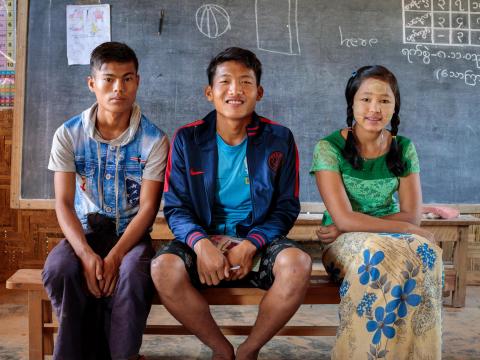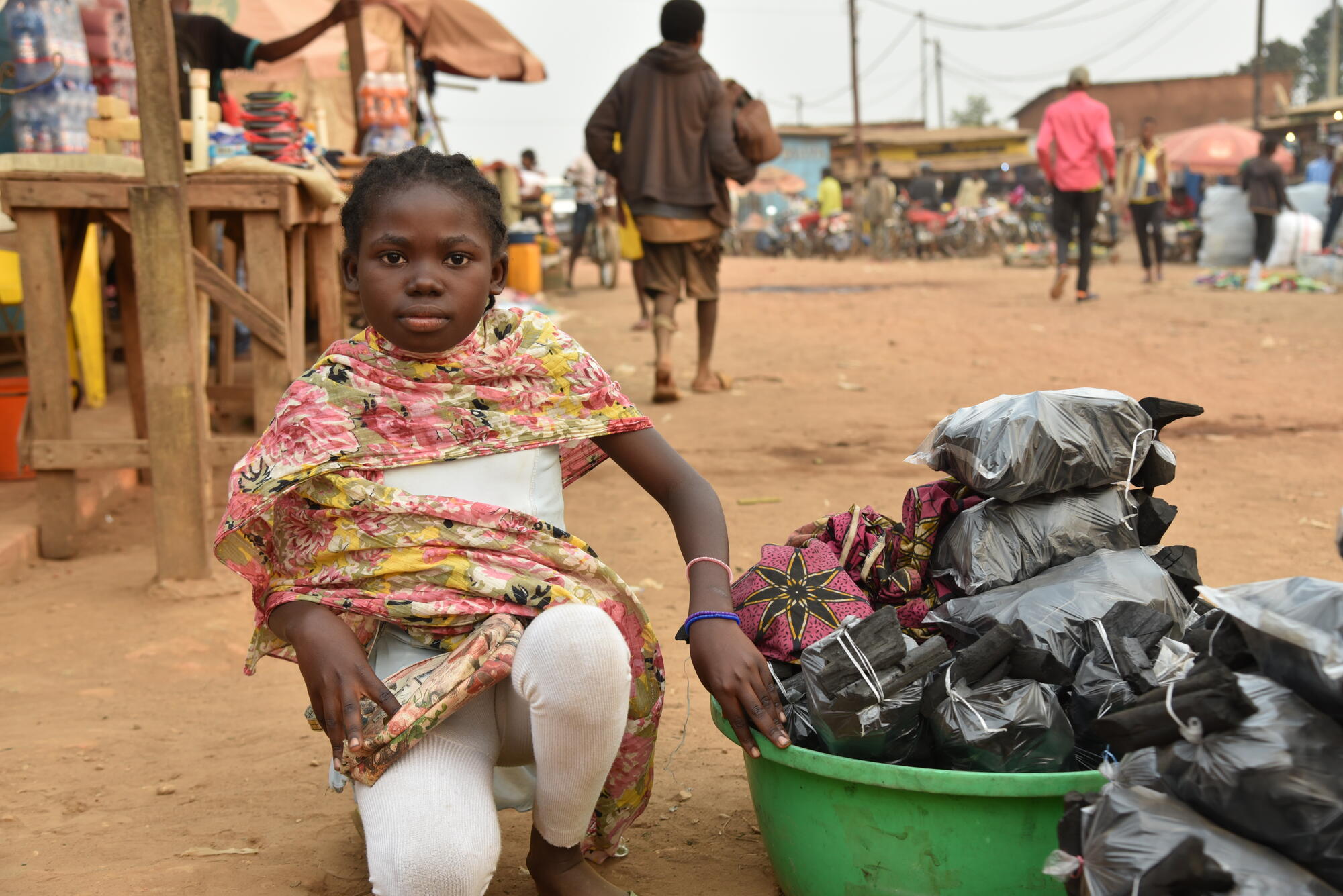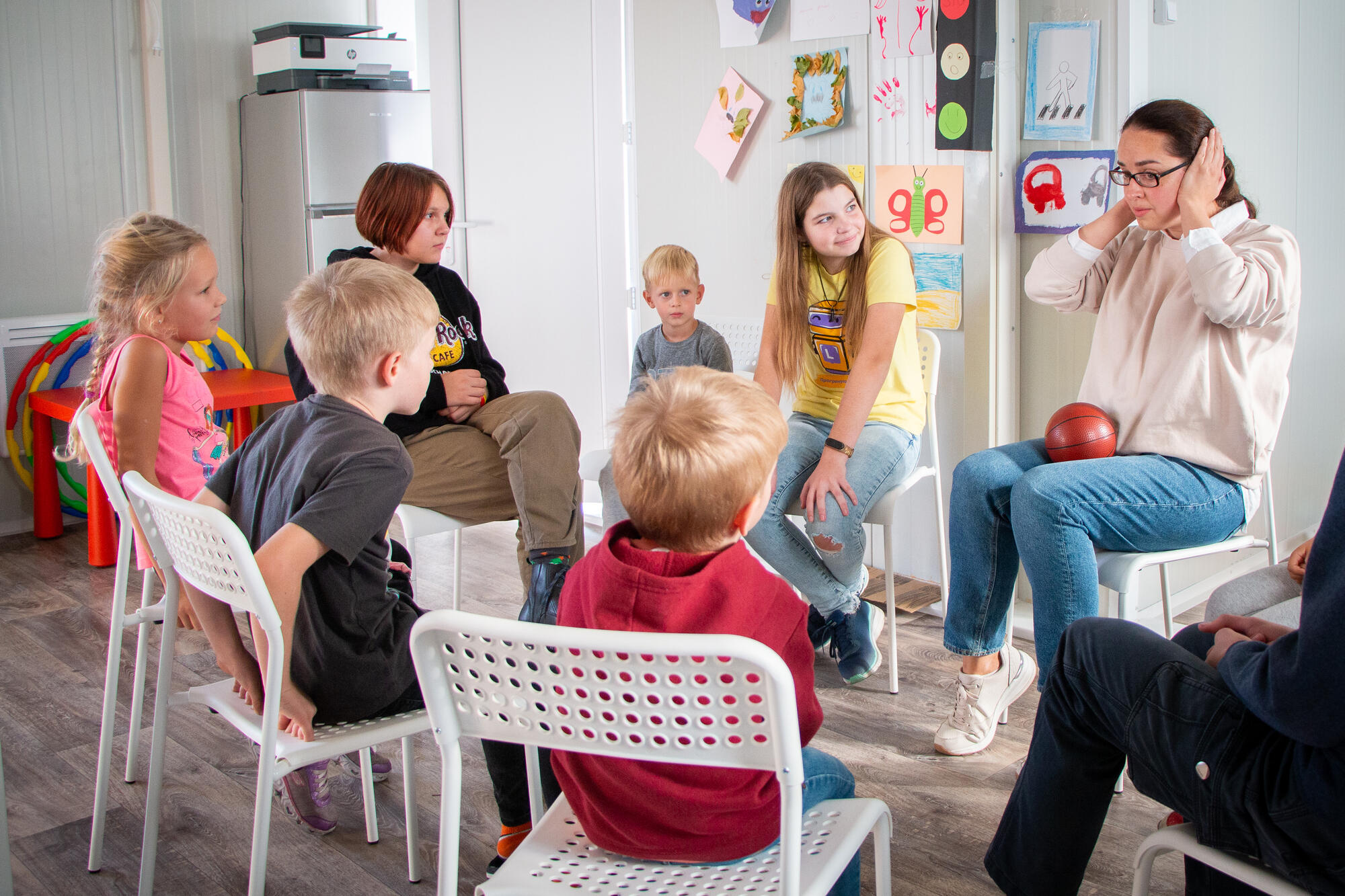What you need to know about Conflict + Poverty

War destroys things. What can you tell me that I don’t already know?
Take a moment. Pick yourself up and go outside. Step away from your chair, your comfortable space. Step a little further away from your things; the items you’ve spent years meticulously and lovingly gathering. Step away from your photos, step away from your wallet, wardrobe, comfy shoes, your pets and your computer. You’re still you, right? Now imagine there’s no way of getting back to all those things.
You have your phone and the clothes you are wearing. In your head and your heart, you are the same person you were a few seconds ago, but you’re also different: you have absolutely nothing more.
You are now in exactly the same position as so many humans mired in conflict around the world. Poverty isn’t always a slow-burn decline, or something someone has been born into. In the context of conflict, poverty begins at the first exchange of gunfire.
It seems crazy there’s so much fighting when we’re still getting over the fight against COVID.
If only the onset of one crisis meant the end of another – but the opposite is true. New crises compound existing crises and right now, conflict is on the rise. Supply-chain issues connected to the pandemic have not been resolved and the conflict in Ukraine has exacerbated fragile countries’ struggles to access to essential goods. And climate change adds another layer of complexity and tension.
Today, two billion people live in countries where development outcomes are deeply affected by fragility, conflict, and violence. Around the world, one in five children are currently living in areas affected by armed conflict, with numbers rising every month. The surge in complex, drawn-out conflicts in recent years has led to increasing forced displacement. While a full picture is yet to be established, at mid-2022, the UNHCR estimated that global forced displacement has reached 103 million people, with nearly 37 million being children under 18.

So what does that really mean for people?
Conflict is closely linked to multidimensional poverty, a term that describes the way that extreme poverty can reach far beyond not having money or an income.
In the context of conflict, multidimensional poverty can look like:
- no access to banks
- no access to school
- no electricity or running water
- no access to proper sanitation
- limited access to nutritional food
- inflation putting the price of essentials out of your budget
- no access to fuel
- limited access to healthcare
- no access to essential identity/travel documents, or government agencies
That doesn’t sound good for people’s long-term prospects.
It’s not. Beyond the devastating cost to human life, another of conflict’s biggest casualties is the destruction of vital infrastructure that holds the fabric of society together, sometimes known as de-development.
The aftermath of conflict can set a country’s people back decades in terms of diverting important funds back to rebuilding the basics from scratch – hospitals, government buildings and data, schools, roads. In the face of these massive, fundamental investments that are needed, a recovering nation’s weakest people are invariably the first to be cut off. Women, children and the disabled are disproportionately disadvantaged by the aftermath of conflict.
Long after the conflict is over, the resonating effects on the next generation ripple on. With children out of school for extended periods, economies suffer from weakened workforces. With neither the stability nor resources to restore normality, a family which was previously struggling with poverty has very few chances to get back on its feet within at least two generations.
Prolonged exposure to violence also has long-lasting psychosocial effects on children, undermining both their physical and emotional wellbeing in both the short and long term. To help mitigate the damage, World Vision works in the most fragile global contexts to add some normalcy to children’s lives. Our Child-Friendly Spaces, give kids a place to experience childhood in areas surrounded by instability and offer a touchstone with their future life, away from conflict.

How does all of that affect the peace process?
Conflict makes poverty. But poverty also makes conflict. Poverty can make countries more prone to civil war, while armed conflict weakens governance, accountability and economic performance, increasing the risk of more conflict.
At a state level, poverty can lower resilience to conflict by weakening government institutions limiting the scope of authorities and justice services that can hold the balance of peace. High rates of unemployment and inequality, combined with low levels of education and development, are thought to soften the ground for recruitment to armed forces and provide motives to fight.
OK. What are the solutions?
World Vision is dedicated to working with children, families and communities to overcome poverty and injustice. We are achieving this in three ways: transformational development, disaster management, and advocacy.
Transformational development
World Vision works with communities in need to identify and implement long-term changes to improve their lives, such as: access to food, water, clothing, shelter, education, healthcare, sanitation, and disaster mitigation measures, and help them break the poverty cycle.
Child sponsorship is one of the ways World Vision works in communities to economically empower the most vulnerable community members, adding vital stability at a grass-roots level. In Honduras, we supported a community of 11,000 women and men to learn valuable farming skills and better support themselves.
Emergency relief
Natural disasters and conflict situations make it even more difficult for poor families to meet their needs. We have the resources ready to assist communities within 24-hours of an emergency occurring. World Vision helps communities with recovery so they can take care of their basic needs over the first few months. In the long-term, we help communities restore and improve their lives. From conflict to cyclones, last year World Vision helped more than 30.1 million people affected by emergencies.
World Vision also helps communities prepare for and mitigate against future disasters, so families faced with natural disasters may not be forced into a cycle of poverty.
Promotion of justice
World Vision advocates for people affected by injustice and poverty. We do this by challenging and changing policies, systems, structures, practices and attitudes that make it difficult for people to escape life in poverty. World Vision promotes justice at local, national, regional, and global levels, for example working with children, parents and local community leaders, or lobbying the United Nations.
World Vision’s Citizen Voice & Action (CVA) programme is a globally successful social accountability tool teaching communities – children and adults alike – to connect with their local authorities and play a bigger role in expressing their areas of need and participate in decision-making process.
Child sponsors partner with communities in the world’s toughest places to be a child, helping them to tackle the biggest challenges they face – including conflict. Will you join us?